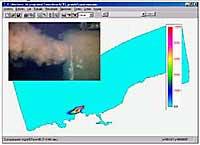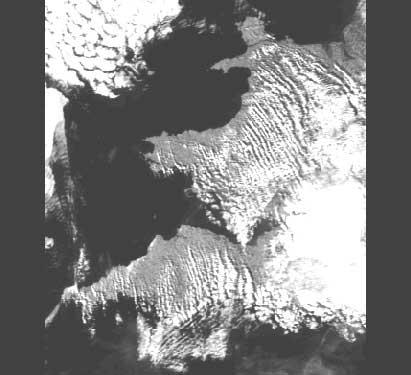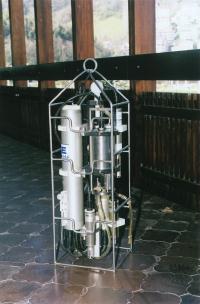AZTI analyzes the marine dynamics of the coast between Donostia and Hondarribia
2002/10/21 Atxotegi Alegria, Uhaina - Elhuyar Zientziaren Komunikazioa

Knowing the coastal marine dynamics is useful, among other things, to know how the discharges of human origin will spread. The movement of marine currents conditions the sense and extent of pollutants emitted on the coast. The pressure exerted by humans is very high in the stretch of coast analyzed by AZTI.
During the years 2000 and 2001 AZTI conducted a hydrodynamic and oceanographic study of the coast between San Sebastian and Hondarribia, but its objective is to reach Baiona. Once the project is completed, it is intended to have tools that allow a better understanding and prediction of current movements and pollution processes between Donostia and Baiona.
Seasonal currents
Data on marine currents have been collected with meters placed at a depth of 25-100 meters in the first months of 2000, 2001 and 2002. Two teams were installed, one at the height of Donostia and one at Cape Higer, and in each of the selected areas three anchoring teams were launched at 25, 50 and 100 meters depth.
In addition to these measurements, hydrographic campaigns have been carried out and sediment samples have been collected between Donostia and Hondarribia.
With all the data collected, AZTI has been able to know how the currents of this stretch of coast vary according to the seasons of the year. In autumn and winter, for example, the wind blows mainly from the southwest and the currents that form cause a drift east and north. In spring the wind blows northwest. The currents then head south on the French coast and west and southwest in Spanish. The researchers have found that the summer situation is similar to that of spring, but they have not been able to determine the main direction of the currents, due to the fragility and variability of the wind at this time.
Modeling

The data collected in this work have been analyzed with a numerical computer model that simulates marine currents and, in addition to the variability of marine currents, other phenomena have been analyzed such as the influence of the traffic of marine currents in the distribution of eggs and larvae and algae of fish, or the dispersion of pollutants emitted to the sea, as mentioned at the beginning.
On the other hand, a specific application has been developed to simulate the discharges of passive substances with background capacity, but that can also be used with floating.

Gai honi buruzko eduki gehiago
Elhuyarrek garatutako teknologia






